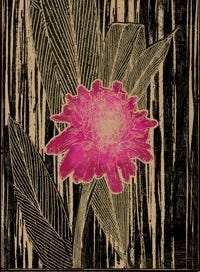Overview
In 2012-13 I developed 20 graphic artworks of local garden and landscape flora and a philosophical narrative about the diminishing importance of our Green Heritage as urbanisation and globalisation impacted them.
The plants were selected to feature #native or regional flora as many plants in local gardens are usually from South America - like Allamanda, Bougainvillea as are many trees in public landscaping like Bucida and Rain Trees. Two of the plants selected were not native but are very familiar to local Malaysians.
In conversations about the plants I also wanted to describe the concept of #ethnobotany- how many of them are used for food, medicine or are cultivated commercially. Descriptions of their #nativehabitat and how they propagated themselves also helped understand their context in our local landscapes.
Glossary

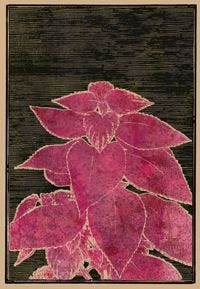
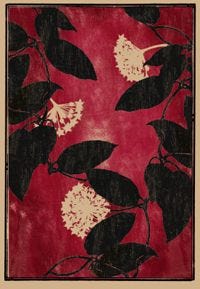
left: Torch Ginger1 | Middle: Painted Nettle2 | Right: Hoya3

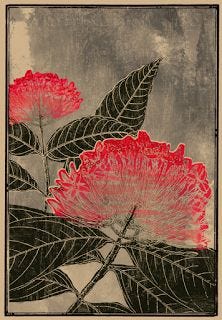
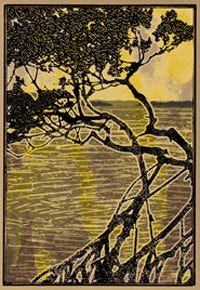
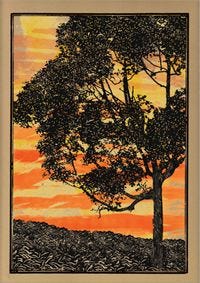
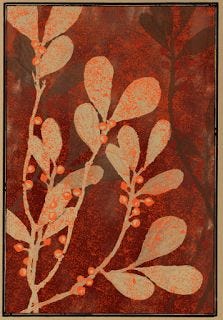
Mangrove6 | Tembusu7 | Mistletoe Fig8
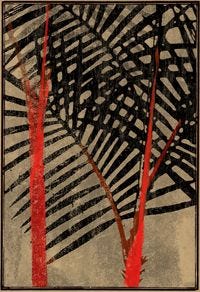
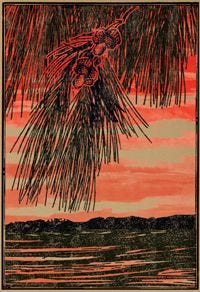
Red Sealing Wax Palm9 |Casuarina10
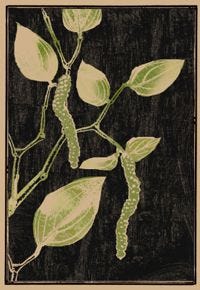

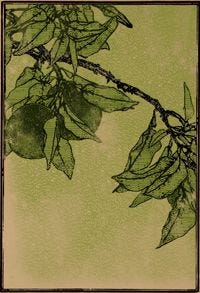
Pepper 11 | | Ferns12 | Lime13
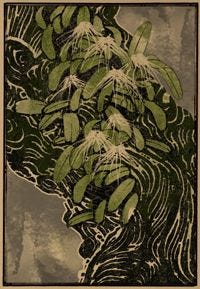
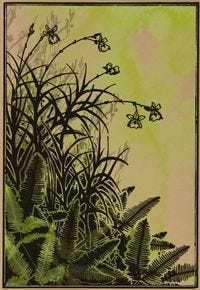
Firework Orchid14 | Bamboo Orchid + Fork Fern15
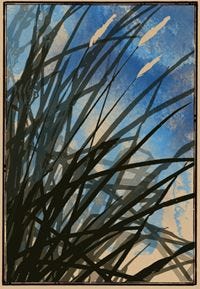

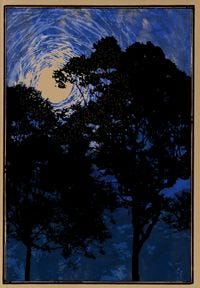


Durian Tree18 | Cempaka19 | Hibiscus20
Torch Ginger, Bunga Kantan, Etlingera elatior
The Torch Ginger is a tall rhizomaceous plant #native to South East. The sliced flower buds are used as a flavourant in local cuisine particularly Penang Laksa. Because of this not many locals recognize the full blown bloom shown in the illustration.
Painted Nettle, Ati Ati, Solenostemon scutellarioides
Many still refer to this plant by its defunct name Coleus. The genus is #native to South East Asia and are an important addition in the design of a tropical garden as it brings an extraordinary range of foliage colour in the absence of flowers.
Hoya
Hoya plants are native to tropical and subtropical regions of Asia, Australasia, and the Pacific islands. They are often #epiphytes found in Malaysian rainforests, coastal areas, and on cliffs. Although they attract some local plant collectors, they are less often found in local gardens despite their striking beauty and fragrance.
Begonia
Begonias are found wild throughout tropical Asia. In Peninsular Malaysia, 52 native species are known growing in #nativehabitats of shadedprimary forests, alongside stream sor rivers and on limestone hills. Plants known for a variety of leaf shapes\s and delicate flowers are often kept in pots on front porches in local gardens with many of them being exotic hybrids. Illustration is of Begonia Grandis a native with pink flowers.
Ixora, Jejarum
Ixora is a genus of flowering plants that are native to tropical and subtropical areas around the world, with the centre of diversity in Tropical Asia. Plants range from small dwarf varieties to large bushes in a range of colours. Often plants are used as hedging or featured in local gardens.
Mangrove, Bakau, Rhizophora Avicennia,Bruguiera, and Ceriops
Mangrove are a richly diverse species in Malaysia with important environmental functions protecting coastlines and providing breeding habitats for wildlife and foraged/farmed marine life like crabs and shrimp. Other #ethnobotanic uses include firewood and folk medicine. They are unable to be cultivated in gardens but are visible in conserved parkland areas like Tanjung Piai in their #nativehabitat of swampy coastline landscapes.
Ironwood, Tembusu Cyrtophyllum fragrans
The tembusu is a large evergreen tree native to South east Asia often featured in botanic gardens and public landscaping. They are recognisable by their deep fissured bark and candelabra shape. To this day their pest resistant hardwood is used to make chopping boards.
Mistletoe Fig, Mas Cotek, Ficus Deltoides
Native to South East Asia, it grows as an epiphyte or terrestrial plant in in thickets and scrub on sandy soil, or on rocks in coastal areas. Plants are also grown in private gardens and have some ethnobotanic uses in folk medicine.
Red Sealing Wax Palm, Pinang Rajah, Cyrtostachys renda
Native to Thailand, Malaysia, Singapore, Sumatra, and Borneo and found in rainforest, riverine, freshwater swamp forest and shoreline. The palm has a striking bright red crownshaft and popularly used in gardens and public landscaping.
Casuarina, Rhu, Casuarina equisetifolia
The casuarina tree is a pine like evergreen tree with a native distribution from Australia, to Southeast Asia and India It thrives in nutrient-poor soils, such as beach sand and is very salt tolerant hence its status as a botanic icon of Malaysian beaches.
Pepper, Pokok Lada, Piper Nigrum
The Piper nigrum plant is native to India but has become an emblem of Johor reflecting its historic importance in the early Kangchu agricultural systems of Johor which pimarily cultivated pepper and gambier. Pepper continues to be an important spice product grown in Malaysia.
Ferns
More than a thousand species of ferns were recorded in the tropical rain forest of Malaysia with a broad range of shapes and sizes from tiny to tree ferns. They represent an important understanding of Malaysian flora in that diversity in our local landscapes is more often found in foliage than in flowers. Ferns differ from flowering plants as they reproduce via spores sharing similar features as mosses and algae.
Citrus
Many are suprised to learn that Citrus are #native to Asia with recent studies showing their origins probably being the subcontinent of India. Plants in the genus produce fruits, including important crops such as oranges, mandarins, lemons, grapefruits, pomelos, and limes. Illustration is of Key Lime or Limau Nipis.
Firework Orchid, Okid Bunga Api, Bulbophyllum Vaginitum
An orchid native to Borneo, Malaysia, Indonesia and Thailand typicallly found growing as an epiphyte on city trees. We’ve anglicised the Malay name for its common name as its actual common name, as you can see from it’s latin name is somewhat crude. Flowering is usually triggered by a drop in temperature.
Bamboo Orchid + Fork Fern, Arundina graminifolia + Dicranopteris Linearis
The combination of Bamboo orchid and Fork Fern is a pairing seen as wayside wildflowers where there is less piblic landscape intervention. Both are broadly distributed across Tropical Asia. The Bamboo orchid is increasingly used for public landscaping. Bamboo orchids are #pollinated by wasps and bees.
Lallang Imperata cylindrica
Lallang is a common sight on wastelands areas as its invasive nature can quickly cover exposed patches As cities get more urbanised it’s diminishing occurrence impacts wildlife as it is an important nesting material for birds such as the Baya Weaver who use the long blades of grass to construct hanging home. Olive-backed Sunbirsd also use the white long fine hairs of the fruits to line their nests.
Blue Pea flower, Butterfly Pea flower, Bunga Telang, Clitoria Ternatea
A climber #native to tropical equatorial Asia. The vivid deep blue flowers find local ethnobotanical use as a natural food dye. It is also regarded as a source of medicine in the Ayurvedic and folk tradition. with recent studies The protein rich legume is also used as animal feed, green manure and cover crop in rubber and coconut plantations. Recent studies show Blue Pea to have important neurocognitive functions.
Durian Dree, Durio
There are about eleven known edible species of Durian native to Borneo and Sumatra with over 200 varieties cultivated commercially in Malaysia. Durio zibethinus or Durian Kampung is the most common species grown. The illustration shows Durian trees at night as bats are vital pollinators for this popular local fruit.
Cempaka, Magnolia Cempaka
The Cempaka tree produces fragrant flowers that range from white to yellow throughout the year, rich in essential oil, often used for perfumery and religious offerings. The illustration indicated the prevalence of tress rather than shrubs as an important source of flowers in this region.
Hibiscus, Bunga Raya, Hibiciscus Sinensis
The origin of the Hibiscus species has long been unknown and has never been found out of cultivation. A study in 2024 based on molecular and morphological data showed that it is a hybrid created in cultivation by Polynesians through a cross between Hibiscus cooperi and Hibiscus kaute originally from Vanuatu and Tahiti. In 1958, then Malaysian prime Minsiter Tuanku Abdul Rahman declared the Hibiscus as Malaysia’s national flower after the Ministry of Agriculture invited proposals for a national flower from all state governments.


